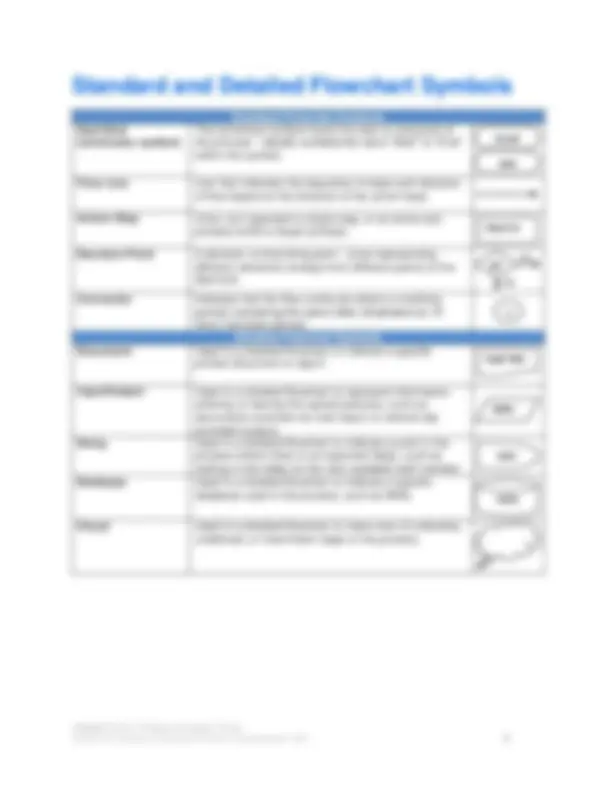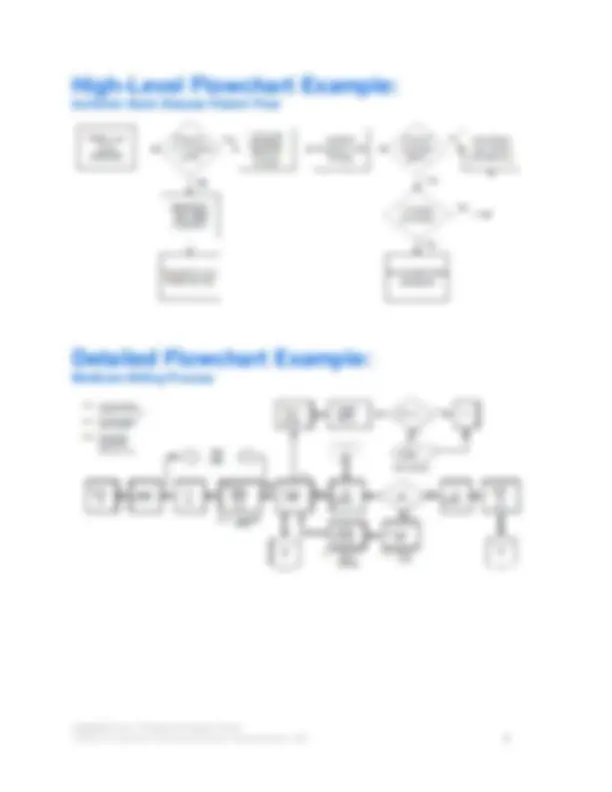




Study with the several resources on Docsity

Earn points by helping other students or get them with a premium plan


Prepare for your exams
Study with the several resources on Docsity

Earn points to download
Earn points by helping other students or get them with a premium plan
Community
Ask the community for help and clear up your study doubts
Discover the best universities in your country according to Docsity users
Free resources
Download our free guides on studying techniques, anxiety management strategies, and thesis advice from Docsity tutors
Instructions on creating flowcharts as a process analysis tool. Flowcharts help clarify complex processes, identify non-value adding steps, and facilitate team understanding. Directions for creating flowcharts, standard and detailed flowchart symbols, and examples of high-level and detailed flowcharts for an ischemic heart disease patient flow and medicare billing process.
What you will learn
Typology: Lecture notes
1 / 4

This page cannot be seen from the preview
Don't miss anything!



Adapted from: Process Analysis Tools
Flowcharts allow you to draw a picture of the way a process actually works so that you can understand the existing process and develop ideas about how to improve it. A high-level flowchart , showing six to 12 steps, gives a panoramic view of a process. These flowcharts show clearly the major blocks of activity, or the major system components, in a process. High- level flowcharts are especially useful in the early phases of a project. A detailed flowchart is a close-up view of the process, typically showing dozens of steps. These flowcharts make it easy to identify rework loops and complexity in a process. Detailed flowcharts are useful after teams have pinpointed issues or when they are making changes in the process.
Using a flowchart has a variety of benefits: It helps to clarify complex processes. It identifies steps that do not add value to the internal or external customer, including: delays; needless storage and transportation; unnecessary work, duplication, and added expense; breakdowns in communication. It helps team members gain a shared understanding of the process and use this knowledge to collect data, identify problems, focus discussions, and identify resources. It serves as a basis for designing new processes.
This tool contains : Directions for Creating a Flowchart Standard and Detailed Flowchart Symbols High-Level Flowchart Example Detailed Flowchart Example 2
Adapted from: Process Analysis Tools
1. Get the “right” people in the room—those who know the process best. 2. Agree on the use of the flowchart and the level of detail required. 3. Decide on the format of the flowchart—high-level or detailed. 4. Define the first and last steps in the process (by observing, brainstorming, or consulting with the people responsible for each step). 5. Begin documenting the process steps in sequence. Note that some steps are parallel—that is, they happen at the same time. Describe the process as it really exists, not the ideal. Include what happens when there are problems in the process. (Tip: Self-adhesive notes are a flexible way to document steps, using one note for each step. This allows you to easily change the order or add new steps.) 6. At decision symbols, choose the most natural branch and continue to the end. 7. Use “clouds” or notes for unfamiliar steps and continue to the end. 8. When you reach the last step, go back to fill in the branches. 9. Read through the flowchart to check for accuracy and completeness. 10. Assign action items to fill in unfamiliar steps and verify accuracy. 11. When the flowchart is complete and accurate, analyze it, use it, and keep it up to date. 3
Adapted from: Process Analysis Tools